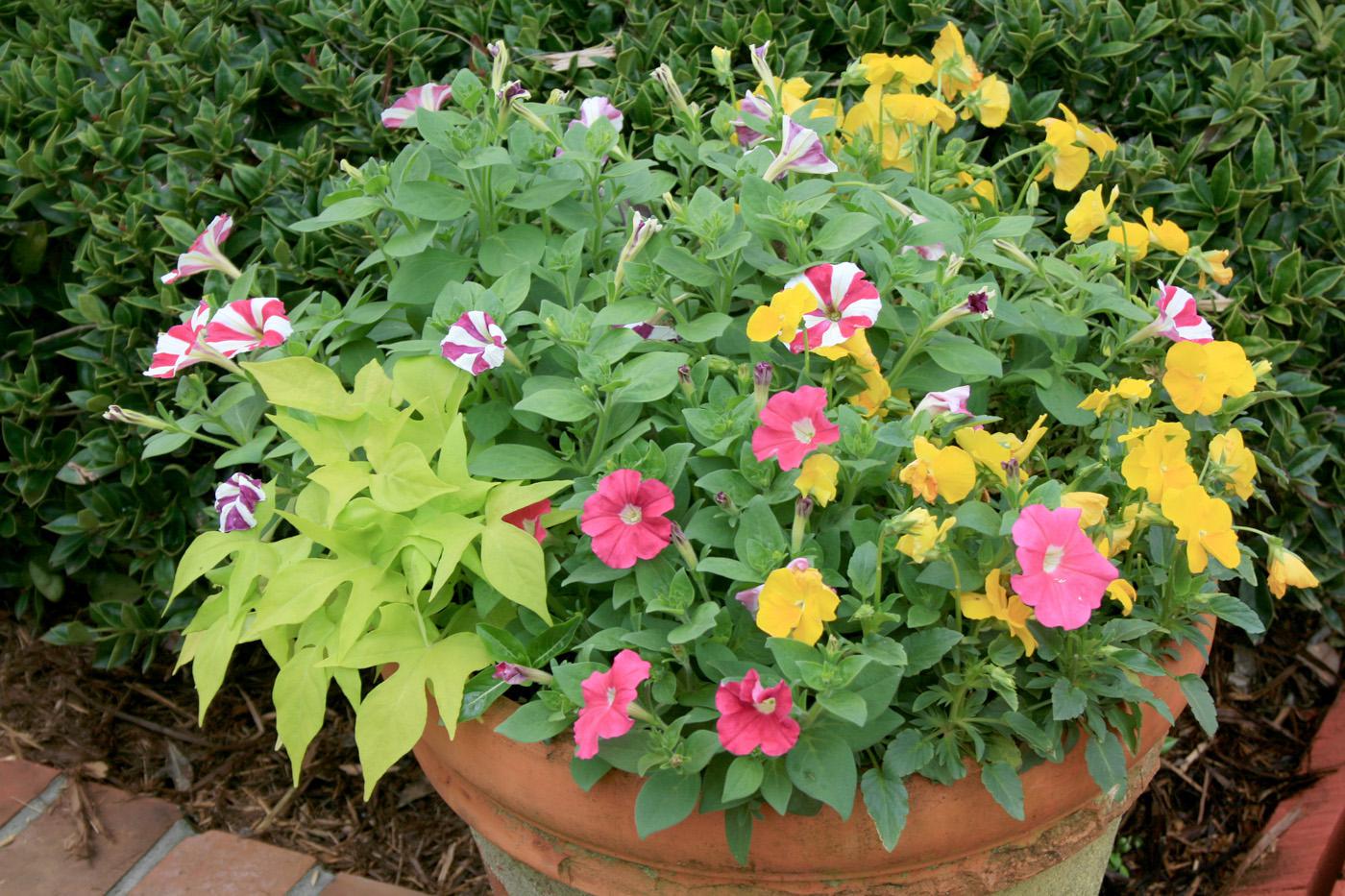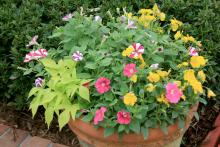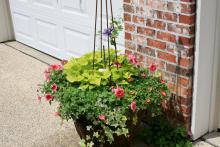Information Possibly Outdated
The information presented on this page was originally released on April 16, 2012. It may not be outdated, but please search our site for more current information. If you plan to quote or reference this information in a publication, please check with the Extension specialist or author before proceeding.
Combination containers offer beauty and variety
But that doesn’t mean it has to be hard. Putting together beautiful flowers and colorful foliage and enjoying combination containers is as easy as gathering pots and planting. You can use everything from heirloom vegetables to flowers to any other type of plant you would like.
Container gardening is an uncomplicated way to scratch that gardening itch without making any major landscape alterations.
Combination containers are mobile. You can move them into more sunlight or out of the sunlight; from the front yard to the backyard. When the plants start going downhill, you can just move them out of sight.
You get flexibility, especially when you have a lot of pavement and very little soil. Container combination plantings allow you to have the joys of gardening without owning any actual soil to grow things in. Your balcony, porch or very small yard can become your garden.
And with a seemingly endless selection of pots and plant combinations, the sky is the limit with container combination plantings.
Designing a combination container is as easy – simply follow the thriller, filler and spiller formula. The thriller plant adds height and interest. The filler plants add color before, during and after flowering. The spiller plants add a sense of grace, with cascading foliage that drapes from the edge of the container.
Containers can become part of the landscape, add to the aesthetics, or serve as focal points. Old-fashioned potato chip cans, terra cotta pots, hyper tufa troughs, or even plain black plastic nursery cans all are useful to the creative container garden designer.
Because you are working with just a small amount of soil, container gardening can become labor-intensive in hot weather, when the containers need to be watered frequently. The quickest way to shut the flowering down in hot weather is to let your combination container dry out.
Water on a daily basis if needed. The quickest way to tell if the container needs water is to push your index finger down to the first knuckle into the media. If it feels dry, go ahead and water the container.
Your local home improvement store has all the fittings and supplies needed to set up an inexpensive, timer-controlled irrigation system if you want to make the watering chore easier.
Begin by always using a good quality, peat-based potting media that drains well. Never use soil, as the drainage will suffer. Commercially bagged potting mixes are engineered for optimum water holding and drainage for plants growing in containers.
Use a slow-release fertilizer at planting. Either 14-14-14 or 18-6-12 formulations are good choices to keep a steady supply of nutrients available throughout the growing season. Many flowering plants benefit from using a water-soluble fertilizer every couple of weeks to supplement the slow-release products.
So get out there this weekend and find some containers and pretty plants. When planting combination containers, you are limited only by your imagination.









